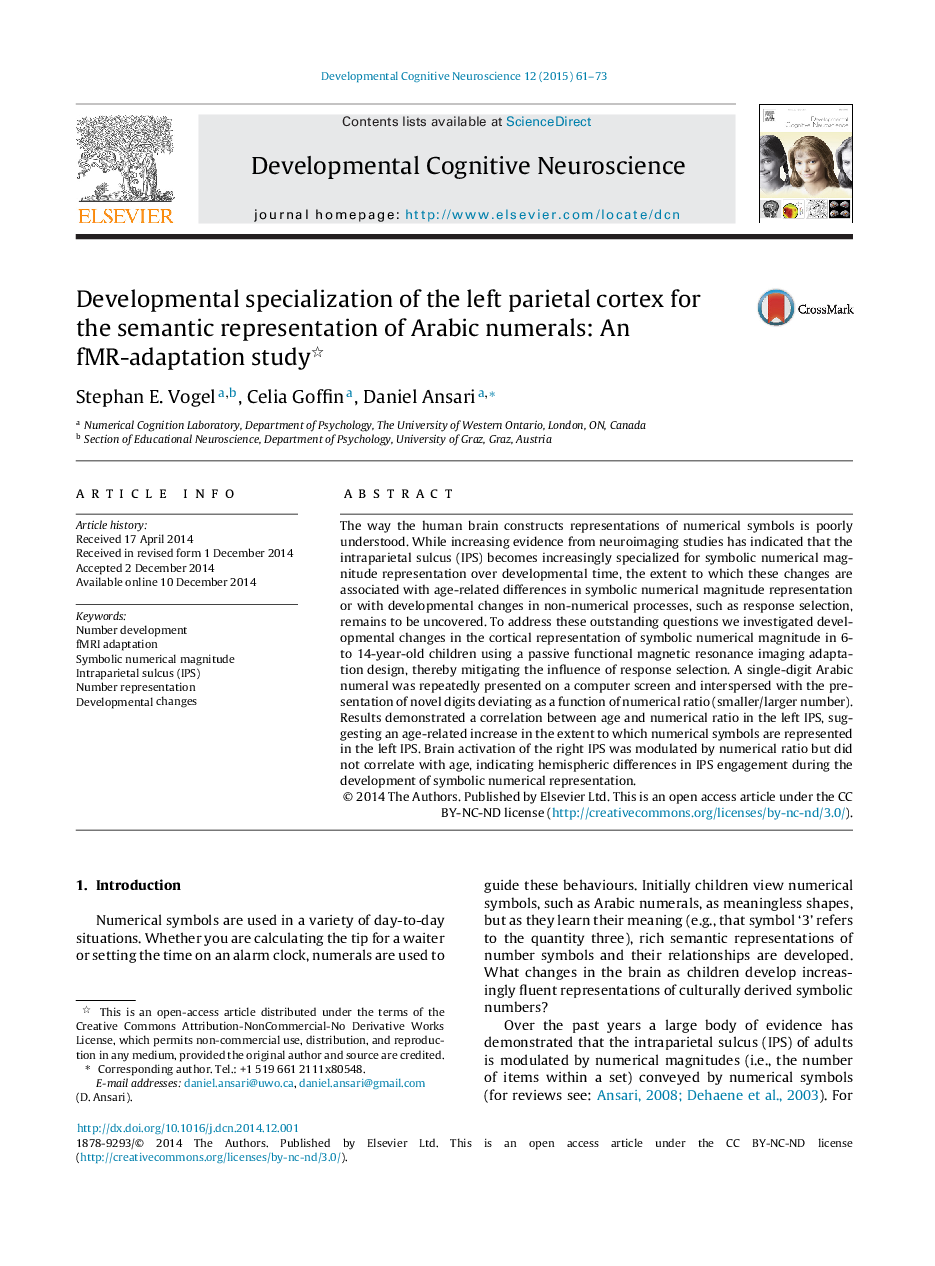| Article ID | Journal | Published Year | Pages | File Type |
|---|---|---|---|---|
| 4316590 | Developmental Cognitive Neuroscience | 2015 | 13 Pages |
•Age-related changes in the brain regions processing number symbols were investigated.•Brain activity of a group of 6- to 14-year-old's was measured with fMR-adaptation.•Ratio-dependent activation in the left IPS correlated with age.•Age-invariant ratio-dependent activation in the right IPS was found.•The construction of symbolic number depends on left IPS engagement.
ABSTRACTThe way the human brain constructs representations of numerical symbols is poorly understood. While increasing evidence from neuroimaging studies has indicated that the intraparietal sulcus (IPS) becomes increasingly specialized for symbolic numerical magnitude representation over developmental time, the extent to which these changes are associated with age-related differences in symbolic numerical magnitude representation or with developmental changes in non-numerical processes, such as response selection, remains to be uncovered. To address these outstanding questions we investigated developmental changes in the cortical representation of symbolic numerical magnitude in 6- to 14-year-old children using a passive functional magnetic resonance imaging adaptation design, thereby mitigating the influence of response selection. A single-digit Arabic numeral was repeatedly presented on a computer screen and interspersed with the presentation of novel digits deviating as a function of numerical ratio (smaller/larger number). Results demonstrated a correlation between age and numerical ratio in the left IPS, suggesting an age-related increase in the extent to which numerical symbols are represented in the left IPS. Brain activation of the right IPS was modulated by numerical ratio but did not correlate with age, indicating hemispheric differences in IPS engagement during the development of symbolic numerical representation.
